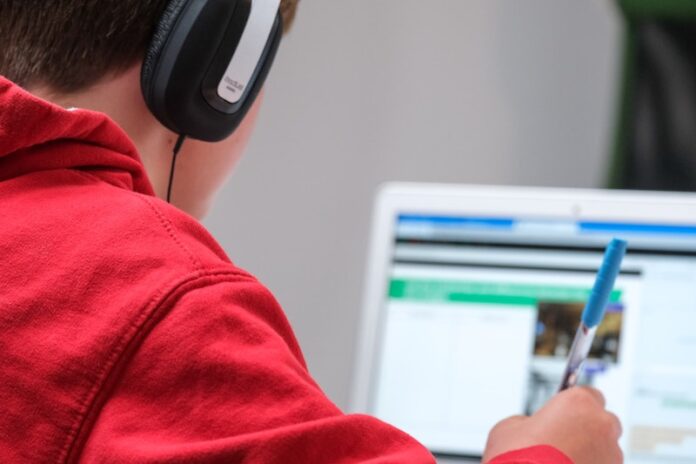Since the education sector was seriously affected by the COVID-19 pandemic, various institutions are still trying to find solutions. Online learning platforms and tools have come to the rescue, and access to the Internet has boosted the demand for online learning worldwide. During the past few years, there has been an increase in investment in educational technology tools and platforms for anyone looking to take an online math course, practice English, or learn any other subject.
Online educational platforms offer many advantages such as ease of access, efficient home learning, reduced physical infrastructure requirements, affordable costs, and flexibility. Affordable degrees online also allow students to pursue quality education for a fraction of the cost. But they do have flaws, and learners can still face challenges with online learning.
To solve the challenges, we must understand them better. Below, we discuss the most significant challenges learners face in online education today.
Technical Difficulties and Outdated Technology
Technical issues are real challenges for students taking online courses, and they can be exhausting. Many students cannot have the proper internet connection speed that is needed to study online. For example, a slow internet connection can significantly affect the speed at which students take lessons and eventually discourage them from studying.
A typical scenario is when you are having trouble downloading information on a topic or if the video is not clear. Niggles like these may cause misinformation in all ways. Also, working with outdated hardware and software will disrupt the online learning experience for kids.
Distractions
Children who study online are easily distracted by small things around the house. You can’t expect their environment to be the same as in a traditional classroom because the home environment is different. This issue is more prevalent among grade-schoolers and teenagers who can’t keep off social media for long.
But this problem also has a solution. Eliminating all the distractions and creating an appropriate space to study make a big difference. Proper learning environment puts students in conditions similar to what they are used to in a traditional classroom.
Lack of Motivation
Motivation is also a means to make sure students are less distracted. Some students begin to slow down and lose motivation without someone to count on and support them, and this issue is prevalent in online learning. Everyone, including children, has days when it’s hard to stay motivated.
Learners usually complain of a lack of motivation in online classes due to little communication between students and teachers. However, successful teachers and students know that staying motivated throughout the course will help them get the most out of their studies.
Passiveness in Students
The internet and social platforms depend on the principle that people want to interact and understand each other. However, on a psychological level, online interactions cannot imitate physical interactions. Physical presence of teachers and other learners in the classroom creates an atmosphere that often cannot be reproduced virtually, especially for math classes.
Children who come to watch video courses online learn a great deal but are often bored when watching for more extended periods. It is a teacher’s job to create interactive e-learning modules to help engage students as much as possible, the same way the teachers at the renowned math platform Brighterly are doing.
Isolation
Isolation is one of the biggest online learning challenges both for teachers and students. Children will always want their teachers to pay personal attention to them. But it can be challenging for teachers handling several classes and tutoring many kids to spot isolated students.
A teacher should not act like a chatbot but should be able to see the learners face to face and interact with them as personally as possible. Given the opportunity, most children would choose to study in traditional classrooms rather than at home, mainly due to this factor.
Computer Literacy
We live in a generation where computer proficiency is necessary for everyone as learning effectively in an online system requires understanding of how a particular program works. Lack of computer literacy has become a big problem for most children, and many still struggle with ordinary technical skills. Some kids cannot perform basic operations like logging in, navigating different materials, switching to lessons, communicating with friends and teachers, and creating and submitting assignments.
Adaptive Issues in Online Learning
It could be difficult for a kid who recently transitioned from the traditional classroom environment to adapt to online learning quickly. Most of them can’t immediately concentrate on online platforms except with adequate guidance, which will take longer.
Online learning is new and may be confusing to some kids. Time management will also be complex for learners who are not well-prepared before their online classes start.
Problems with Feedback
There is a need for all learners to get feedback on their online performance to be able to monitor and improve their learning. Online learning isn’t based only on tests and exams; learners are often given assignments and projects to execute. Research shows that most children rarely go back to review their writing and assignments, which could make it complex and confusing to implement the feedback process properly.
Conclusion
The online learning system is developing rapidly, but there are still some kinks to iron out before it becomes perfect. For most kids, the stated problems are just a few out of many challenges. But don’t worry about the future of your kid’s education online; the solutions to these problems are accessible and will slowly phase out the drawbacks of online learning.

